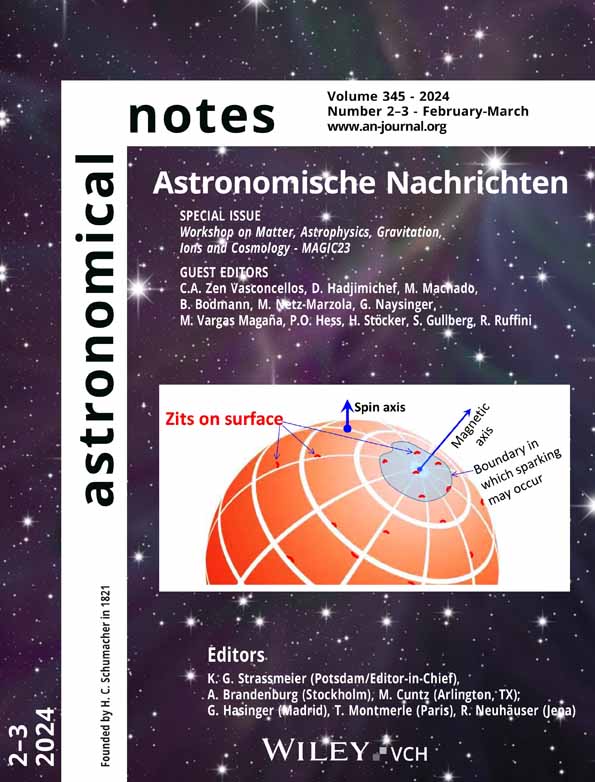Dirac spinor scattering states with positive-energy in rotating spheroid models
Abstract
There are many rotating spheroids in the universe, and many astronomers and physicists have used theoretical methods to study the characteristics of stellar gravity since Newton's time. This paper derives the solutions of eight scattering states ,, and for the Dirac equation with positive-energy , and establishes the relationship between the differential scattering cross section and the stellar density . It is found that: (1) For the eight scattering states, their average scattering cross-sections are proportional to , and depend on the star's radius, and the higher the stellar density , the greater the sensitivity of to the change of ; (2) For the four scattering states , their average scattering amplitudes and depend on the mass of the particles; while for the other four scattering states , , then and are independent of . This study links the gravitational characteristics of stars with the scattering cross section, creating a new method for studying the gravitational characteristics, which helps to reveal the mystery of the gravity of rotating ellipsoidal stars.




